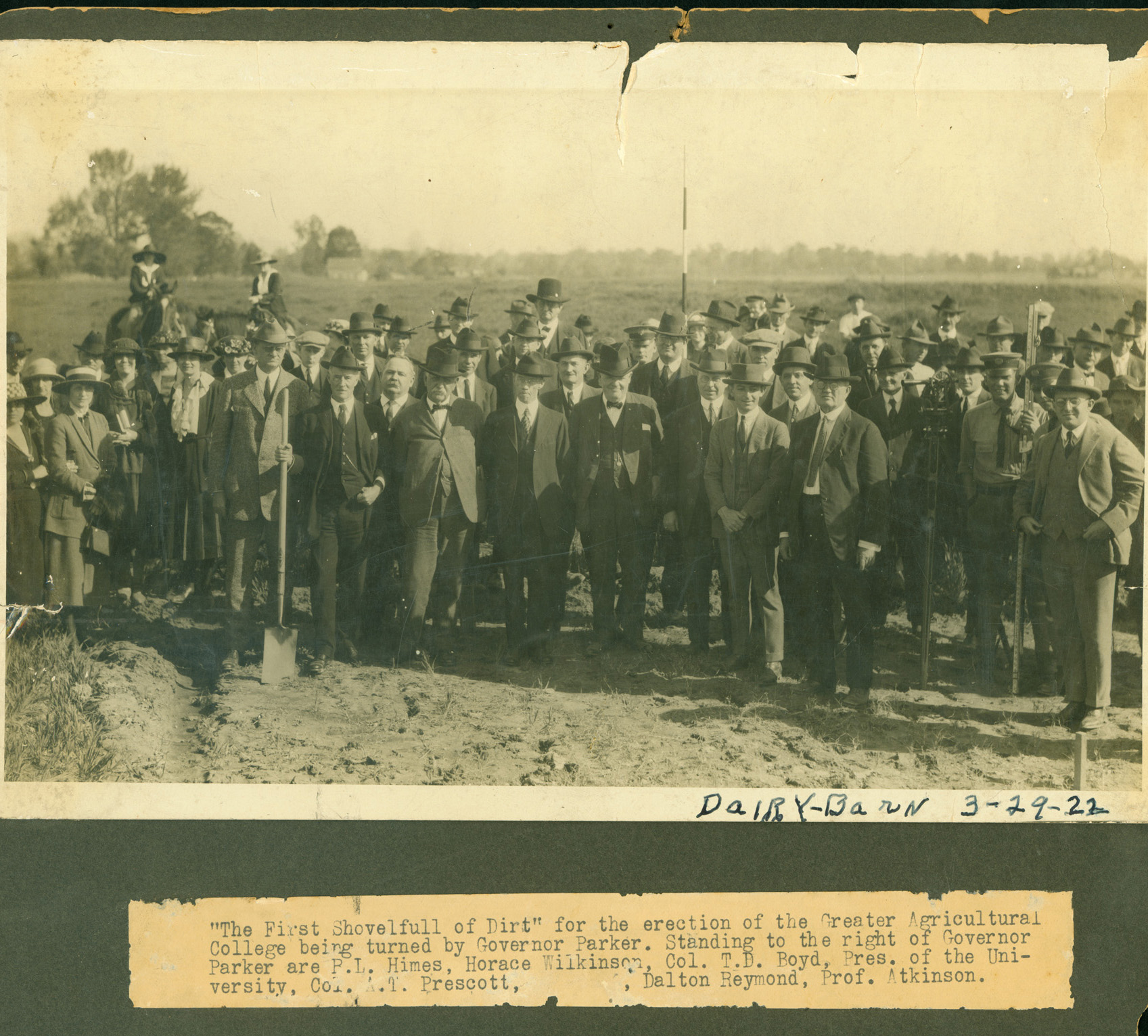History and beauty: The development of LSU's campus
The idea for Louisiana State University’s present campus was envisioned by President Thomas Boyd in the early 1900s. The former Baton Rouge military post, a 200-acre complex that served as LSU’s campus from 1886 to 1925, had been adequate. By 1915, most of the available land was occupied by much-needed buildings constructed during a fifteen year building program that began in 1900. As an agricultural and mechanical college with a strong emphasis on the agricultural aspects, LSU needed more space to meet the needs of large-scale crop experimentation and animal husbandry, as well as growing student population.
Thomas Boyd had his eye on Gartness Plantation south of Baton Rouge owned by C. P. Williams of Mississippi. In 1918, Thomas Atkinson (dean of the College of Engineering), William Dodson (dean of the College of Agriculture), O. B. Steele (owner of Windrush Plantation), and other prominent Baton Rouge citizens, paid Williams $500 on May 23 for an option to buy the property until the legislature could pass a bill to allocate the $82,000 asking price. On June 4, 1918, the legislature passed Act 6 which provided the funding to purchase Gartness.
In 1920, the Olmsted Brothers landscape architecture firm was hired to create an overall plan for the new campus. The firm had already designed the campuses of Stanford University, the University of Chicago, and others, as well as Audubon Park in New Orleans. They envisioned the campus architectural style of the Northern Italian Renaissance featuring pantile roofs, archways, and stucco walls along with arches and towers. The style was very similar to that of Stanford University.
This plan was used, with modifications, by architect Theodore Link who was hired in 1922 to design the buildings. Link died the following year and his son, C. Y. Link, briefly took over. In 1924, the New Orleans architectural firm of Wogan and Bernard was engaged to oversee the construction of the campus using Theodore Link’s designs.

Construction began on March 29, 1922 with the groundbreaking for the dairy barn. Barns and other buildings associated with farming were constructed first to keep with LSU's mission as an agricultural university. The campus was substantially ready for classes by fall of 1925. A three-day formal dedication ceremony began on April 30, 1926 featuring speeches by various state dignitaries including former governor John M. Parker, who was in favor of constructing the new campus, and former US Senator Edward J. Gay. The ceremony also included performances by the LSU Cadet Band and the Stanacola (now Exxon) Refinery Band. It ended with a track meet between Tulane and LSU and an “old-fashioned Southern barbecue” on the Indian mounds.
Although the Olmsted Brothers drew up a proposed ground plan for the campus, they were not asked to provide a landscape plan. In 1930, Steele Burden was hired as a “yard man” to work on campus and laid the groundwork for the landscaping we enjoy today. Burden worked without a plan. If he saw a place that he thought needed a tree or garden, he simply planted them. Burden was responsible for many of the oaks and magnolias that shade the campus, particularly along Dalrymple Drive, in the quadrangle, and around many of the campus buildings constructed before 1970. Burden also designed lush gardens that no longer exist near the president’s house on Highland Road and behind the Faculty Club. Burden retired from LSU in 1970. He and his sister Ione donated Windrush Plantation to LSU, which is now the Rural Life Museum and Windrush Gardens.
For further reading:
Cowan, Barry. Louisiana State University. Call number: LD 3113 .C69 2013
Desmond, Michael. The Architecture of LSU. Call number: LD 3114.6 .D47 2013.
Louisiana State University Architectural Drawings by Theodore Link (digital collection): https://cdm16313.contentdm.oclc.org/digital/collection/TLD.
Louisiana State University Office of the Chancellor Records. Multiple locations, please see the finding aid: https://lib.lsu.edu/sites/default/files/ua/findingaids/a0001_officeofchancellor.pdf.
Ruffin, Thomas F. Under Stately Oaks: A Pictorial History of LSU. Rev. Ed. Call number:
LD 3114.5 .R84 2006.
Steele Burden Oral History Interview, 1994. Call number: L:4700.0452.
